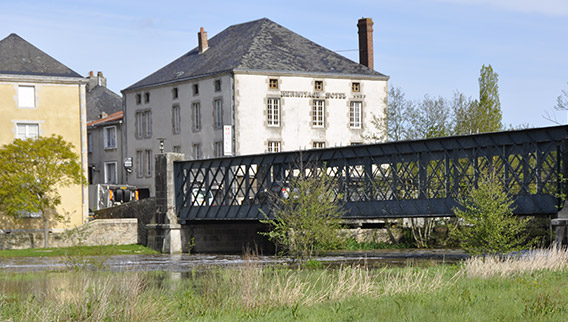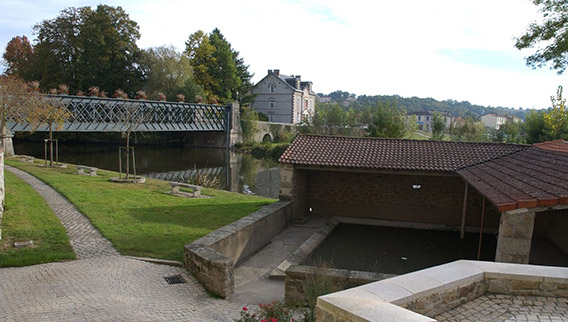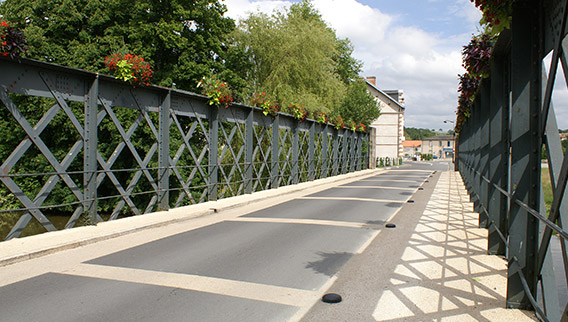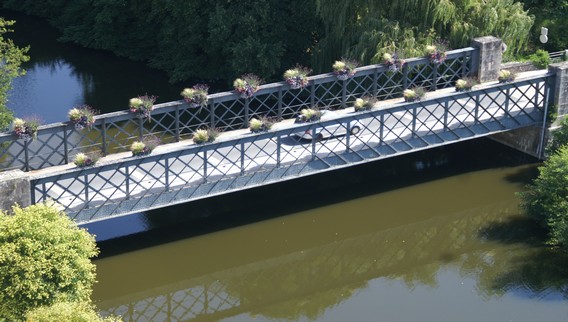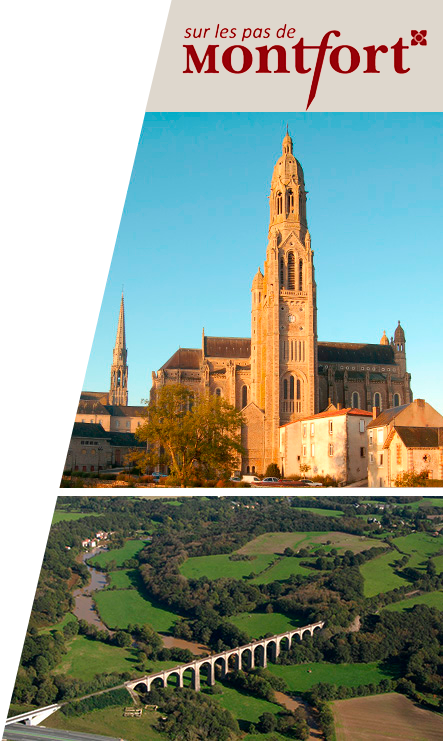These days, it’s easy to cross the Sèvre Nantaise using the Eiffel bridge.
But in mediaeval times, the lack of any bridge and the strength of the river current made this a very real obstacle!
Look at the course of the river and follow it towards the Basilica. Do you see this small area of laid stones ? This is what remains of a mediaeval causeway, which once led to a mill called the Moulin de la Cour.
We know very little about this ancient mill, except that in 1567 it was already a ruin !
In fact, this causeway was actually a low-level dam that directed the flow of water towards the mill wheel. It was also used to divert winter flood waters to regulate the flow of the river.
Originally, the Moulin de la Cour causeway was in two sections linked by a central island. On the left bank, a segment still remains that once connected the island to the sluice gate of the mill.
It is thought that the missing section was located where the sluice gate of the Moulin de la Sagesse lay, and that the mill itself stood on the site of the municipal wash house.
Before the Eiffel bridge was constructed, there was another way of crossing from one river bank to the other : the Gothic bridge.
This bridge was referred to nostalgically in 1896 by Arthur Morin, a former Saint-Gabriel boarding school pupil, who wrote : “I remember crossing the beautiful babbling river Sèvre on the ugly, brand-new iron bridge that replaced my old humpback bridge, an ancient stone bridge whose crumbling simplicity was exactly right and was missing from my landscape”…

